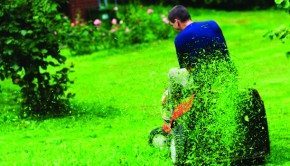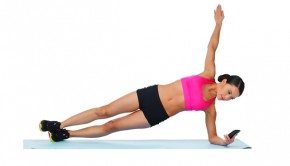Moveable Feet
How to Make Walking Part of Everyday Life
Hippocrates called walking “man’s best medicine,” and Americans agree: According to the U.S. Surgeon General, walking is America’s most popular form of fitness. It’s free, convenient and simple. The Foundation for Chronic Disease Prevention reveals that 10,000 daily steps help lower blood pressure, shed pounds, decrease stress, and reduce the risk of heart disease and Type 2 diabetes. Here’s how to rev up the routine and stay motivated.
Practical Tips
Breathe. Belly breathing calms the parasympathetic nervous system, expands lung capacity and improves circulation. Inhale through the nose, fill the belly and expel through the mouth, advises Asheville, North Carolina, resident Katherine Dreyer, co-founder and CEO of ChiWalking.
Try new techniques and terrain. “The body is smart and efficient. It must be constantly challenged in safe ways and tricked into burning more calories,” says Malin Svensson, founder and President of Nordic Walking USA. She suggests taking the stairs or strolling on sand to strengthen the legs and heart.
Dreyer recommends ascending hills sideways (crossing one foot over the other) to engage new muscles and protect the calves and Achilles tendons. She also suggests walking backwards for 30 steps every five minutes during a 30-minute walk to reestablish proper posture.
Push with poles. Compelling the body forward with Nordic walking poles can burn 20 to 46 percent more calories than regular walking, reports Research Quarterly for Exercise and Sport. Svensson explains, “Applying pressure to the poles activates abdominal, chest, back and triceps muscles, which necessitates more oxygen and thereby raises the heart rate.” The basic technique is: plant, push and walk away.
Mindful Tips
Feel the Earth move under your (bare) feet. Improve mood, reduce pain and deepen sleep by going outside barefoot, says Dr. Laura Koniver, of Charleston, South Carolina, a featured expert in the documentary, The Grounded. “The Earth’s surface contains an infinite reservoir of free electrons, which, upon contact with the body, can neutralize damage from free radicals,” she says.
Notice nature. Alexandra Horowitz, author of On Looking: Eleven Walks with Expert Eyes, finds walking outdoors infinitely more engaging than exercising in the gym. Seek out woodsy hikes, scenic waterways or historic downtowns, and “open up to experiencing the world,” she says.
Practice moving meditation. To lighten a heavy mood, “Imagine your chest as a window through which energy, fresh air, sunshine, even rain, can pour into and through you as you walk,” says Dreyer. To ground a scattered mind, she suggests focusing on connecting one’s feet with the Earth.
Creative Tips
Make fresh air a social affair. A group walk can boost performance levels of participants, says Dennis Michele, president of the American Volkssport Association, which promotes fun, fitness and friendship through noncompetitive, year-round walking events.
Horowitz suggests strolling with friends and sharing sensory discoveries. “A fresh perspective can help tune you into the great richness of ordinary environments often overlooked,” she says.
Ditch the distraction of electronic devices. Horowitz views walking texters as “hazards and obstacles, non-participants in the environment.” Australian researcher Siobhan Schabrun, Ph.D., reveals the science behind the sentiment in her recent University of Queensland study. The brain, she found, prioritizes texting over walking, resulting in “slowing down, deviating from a straight line and walking like robots, with the arms, trunk and head in one rigid line, which makes falling more likely.”
Walking a dog brings mutual benefits. Dr. John Marshall, chief oncologist at Georgetown University Hospital, in Washington, D.C., prescribes dog walking to his cancer patients, asserting it yields better outcomes than chemotherapy. For maximum enjoyment, strive to hit a stride, advises Carla Ferris, owner of Washington, D.C. dog-walking company Wagamuffin.
Be a fanny pack fan. Fanny packs, unlike backpacks, which can disturb natural torso rotation, comfortably store identification, phone, keys and water, says Svensson. Ferris agrees: “Walks are so much more enjoyable hands-free.”
Walk while you work. Much of the independent and collaborative work at Minneapolis finance company SALO emerges as employees walk slowly on ergonomic treadmill desks. “Being up, active and forward-moving on the treadmill benefits productivity,” says co-founder Amy Langer. Alternatively, consider investing in a cordless headset or standing desk. “Most anything you can do sitting, you can do standing, and supporting your own body weight is almost as beneficial as walking,” she says.
A study reported in the journal Diabetologia suggests that sedentary time combined with periods of moderate-to-vigorous exercise poses a greater health risk than being gently active throughout the day. Dreyer’s mantra? “The body is wise. Listen when it says, ‘Get up and walk a bit.’”
<












